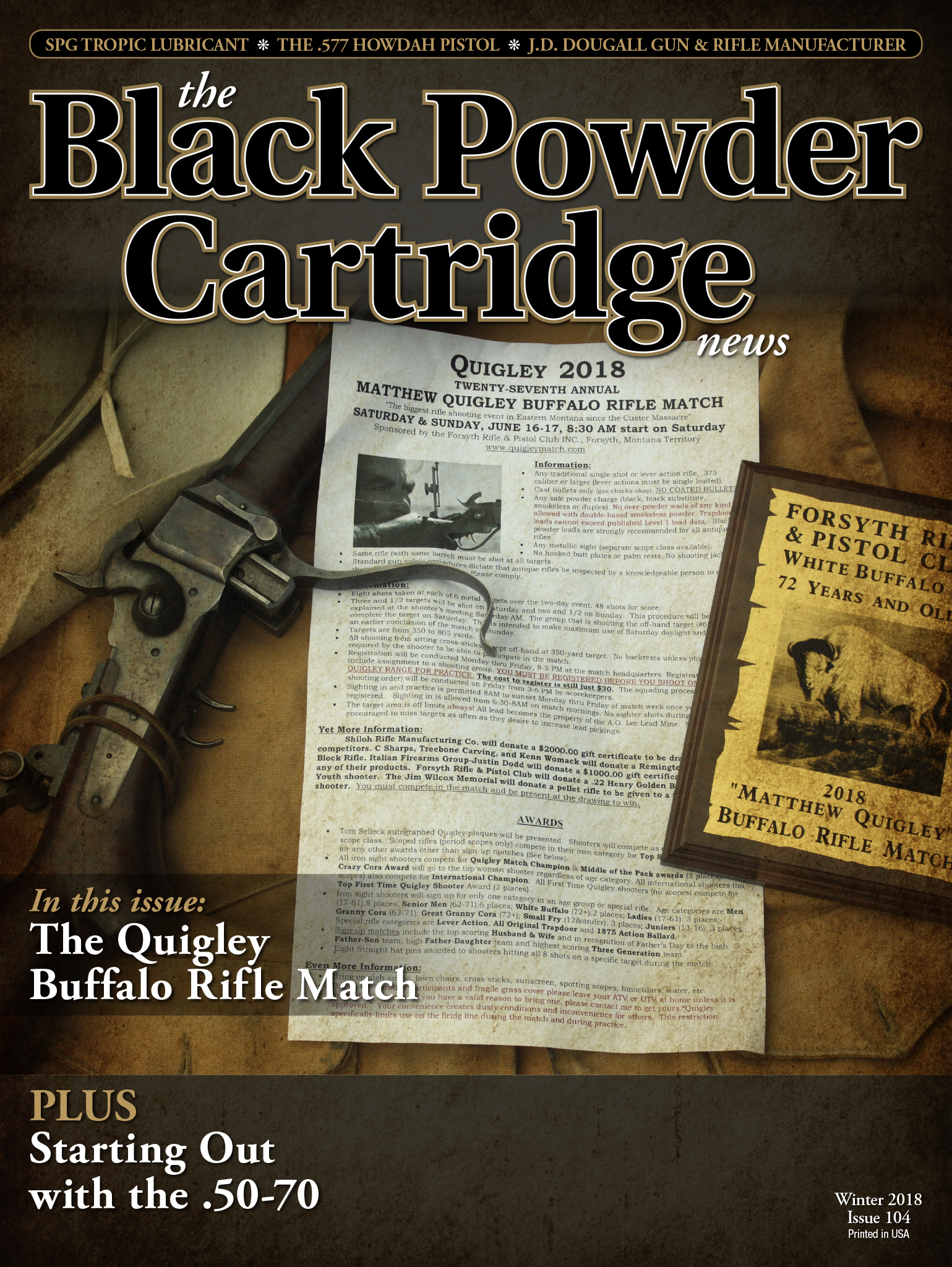The 2018 Matthew Quigley Buffalo Rifle Match
How To Salvage A Great Shooting Match
feature By: Harvey Pennington | December, 18
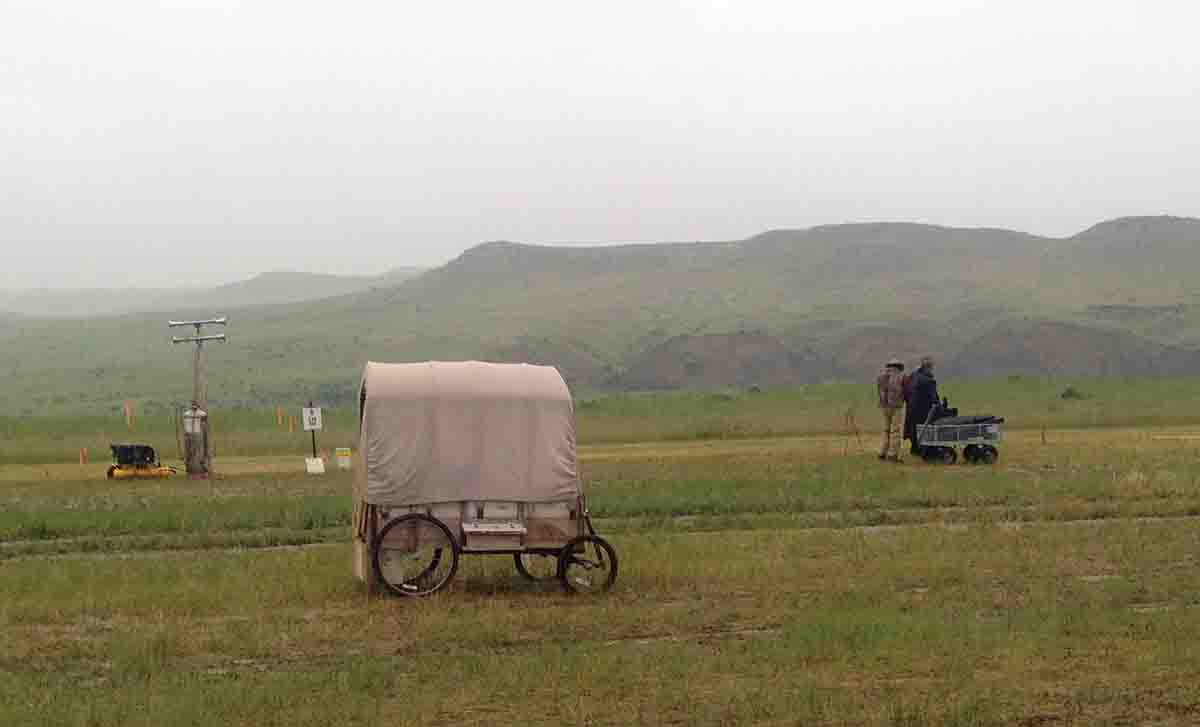
This was the 27th year of that match, and a total of 642 shooters signed up to compete. The competitors came from 36 states, as well as Canada, Australia and Germany.
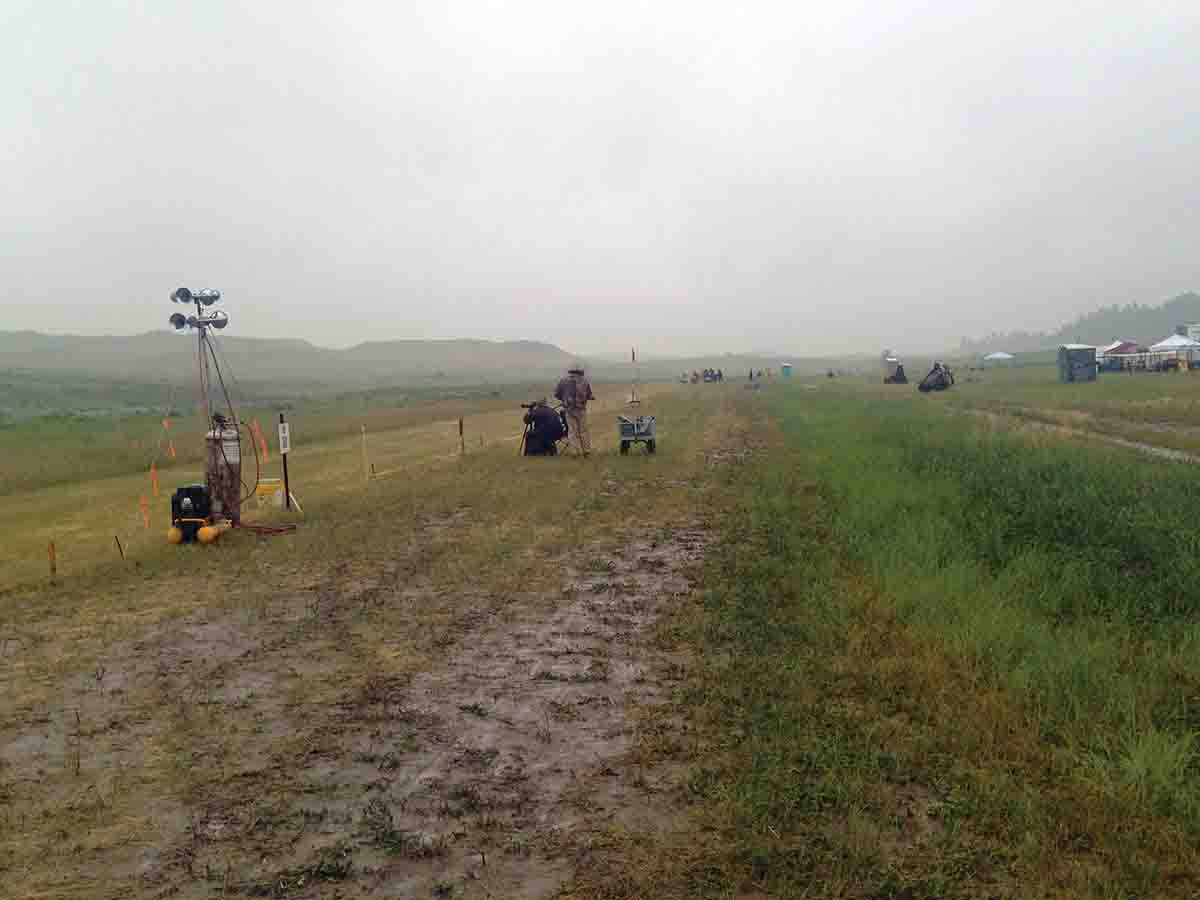
Ordinarily, at that first meeting, the shooters would be standing and squinting in the early-morning sunlight as the scoring and safety instructions were given. The shooters were instead standing in the mud and rain, wearing hats and rain gear, wondering if the match could be held at all. The rain had begun on Friday afternoon, had continued all that night and was expected to continue at least through Saturday. Some of the shooters had already left, undoubtedly believing the match would have to be cancelled. It was certainly obvious to everyone that the match could not be held that day; when the Match Director, Claudia Kajin, made an announcement to that effect, it came as no surprise. However, the shooters were asked to reconvene three hours later for the apparent purpose of learning the ultimate fate of the 2018 Quigley.
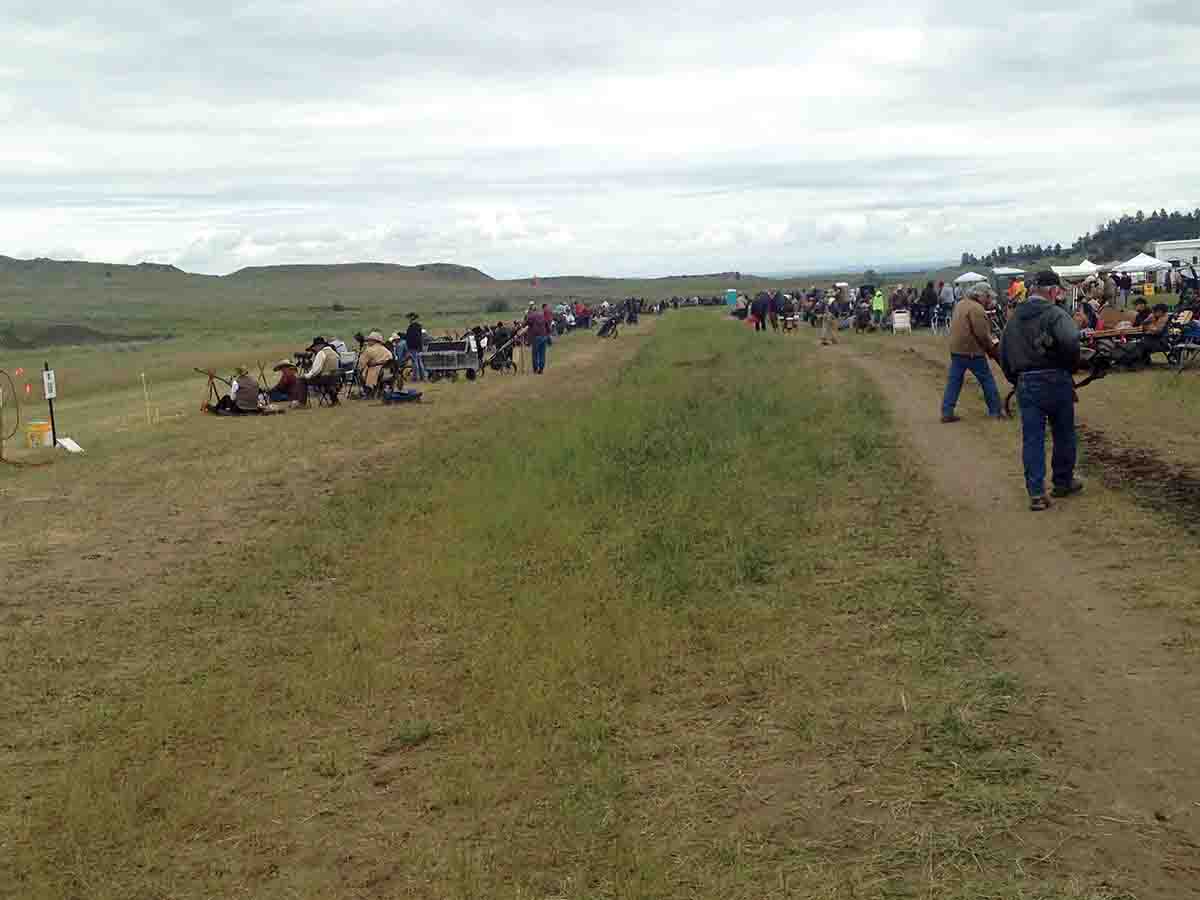
Just as the forecast had stated, Sunday morning was cloudy with a light breeze. About 516 shooters of the original 642 had decided to stay and compete. For sure, the mud (“gumbo”) was still much in evidence, and was more than a little noticeable as the shooters left the opening ceremony and pulled, pushed, or dragged their shooting carts and wagons toward their first shooting lines.
Now, I do not think it would be an exaggeration to say that with the first shots of the match, the spirits of the shooters began to rise. I know mine did. The big booms of the buffalo rifles and the drifting of the black powder smoke always seem to have that effect.
Moreover, as the day warmed and the winds increased, the mud began to dry out somewhat, making travel from one shooting line to another easier to accomplish.
For those unacquainted with The Quigley, six metal targets on the range are located at distances varying from 350 to 805 yards. The 350-yard target is the only offhand target. All other targets are shot from the sitting position with the rifle rested on cross-sticks. Unlike silhouette matches, no prone shooting is permitted.
Obviously, with only four shots per target, the shooters and spotters had to get serious very quickly. Elevation settings for each target had to be precisely set according to the shooter’s records. Estimates of wind speed had to be carefully made and the sights set accordingly. The spotter’s job – to accurately locate the hit or miss of his shooter – was, as always, of great importance. After all, it is the information relayed by the spotter that allows the shooter to make appropriate sight and elevation adjustments during the string of fire at each of the targets.
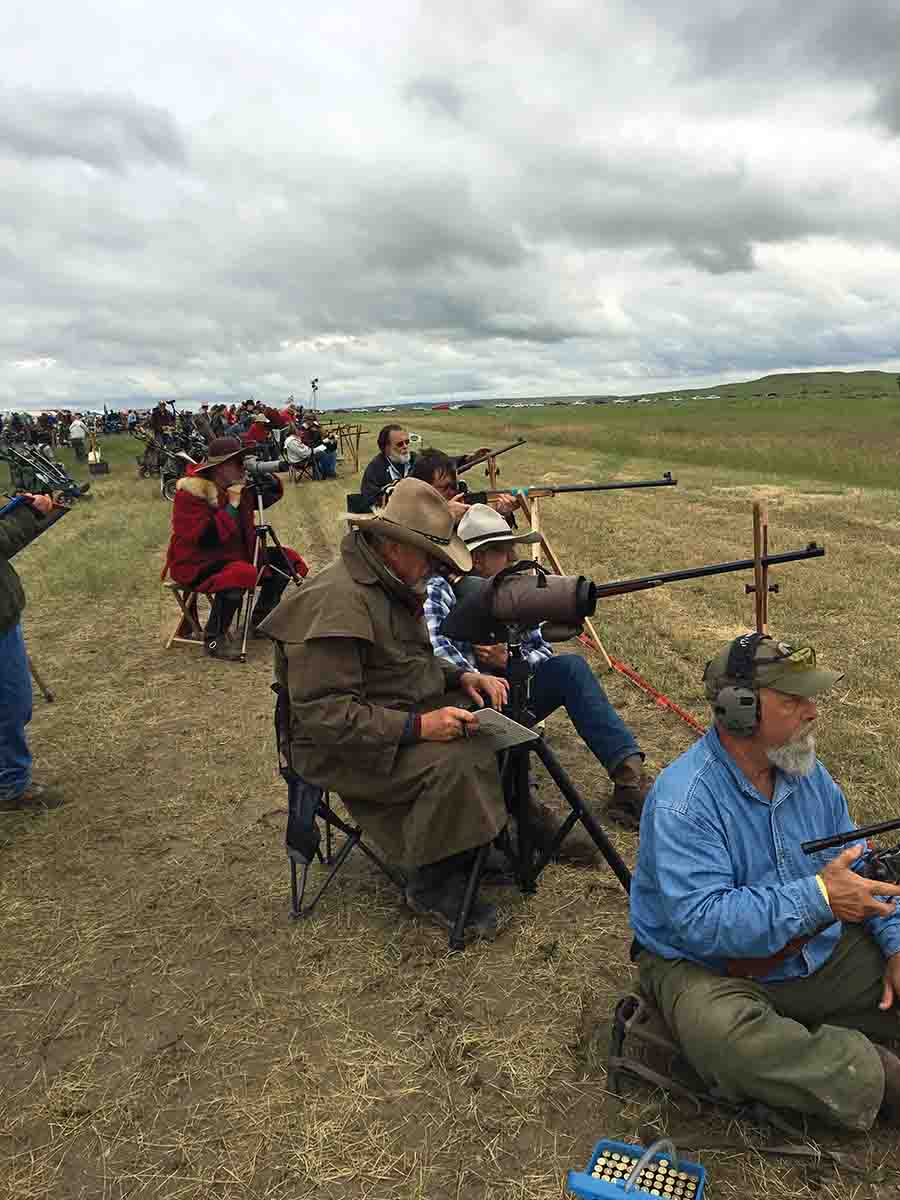
I was to shoot first. The wind was light, and I think I started with only a minute or two of left windage. Now, I always find that I am slightly tense before my first shot in the match; a lot of things go through my mind: Did I set the windage and elevation correctly? Are the cross-sticks at the right height? Is my sitting position firm enough? Did I remember to blow through the barrel to soften the fouling from the shots I had fired on the range just before the shooters’ meeting?
Finally, after our scorer verified the names and order of the shooters on our line, it was time to begin. There were two shooters to my left; the first shooter’s name was called, and his shot was fired; the hit or miss was noted and scored. Then, the same sequence was followed with the shooter to my immediate left. The scorer then called out my name. I closed the action on the .45-100 cartridge, aimed, took a couple of breaths to relax, made sure the sights were centered and fired. It was a hit! As luck would have it, I managed to hit all four shots on that first target.
We moved to the offhand 350-yard “Bucket” target, and luckily the wind was still mild. I hit three of my four shots there.
But, by the time we had moved our equipment to target No. 1 (the 805-yard “Buffalo” target), the wind had increased noticeably. My first shot on that target was a miss – well-centered, but just under the “belly.” After making a slight elevation adjustment, the next three shots were hits. I believe that I left that shooting line with a left windage of 12½ minutes on my rear sight.
Next was the No. 2 (598-yard “octagon” target). The wind speed seemed about the same as it was at the “buffalo,” so I started shooting with a couple of minutes less windage than I had used on that last target. All four of my shots at the octagon were hits.
The No. 3 target is a rectangular target 530 yards from the firing line and it has become known as the “Postage Stamp” because it seems such a small target at that distance. My luck held on this target, and again I managed four hits.
Quinn and I moved to our last target, the 404-yard “diamond.” My luck seemed to stall there, and I left with just two hits. (Quinn managed to hit all four of his shots there, by the way.) Overall, however, I had a pretty lucky match.
Once the final shots of the match had been fired, the shooters took time to clean their rifles, store their ammunition and accessories and relax a little. This was done while waiting for the horn to sound – the signal for the shooters to gather for the closing ceremony.
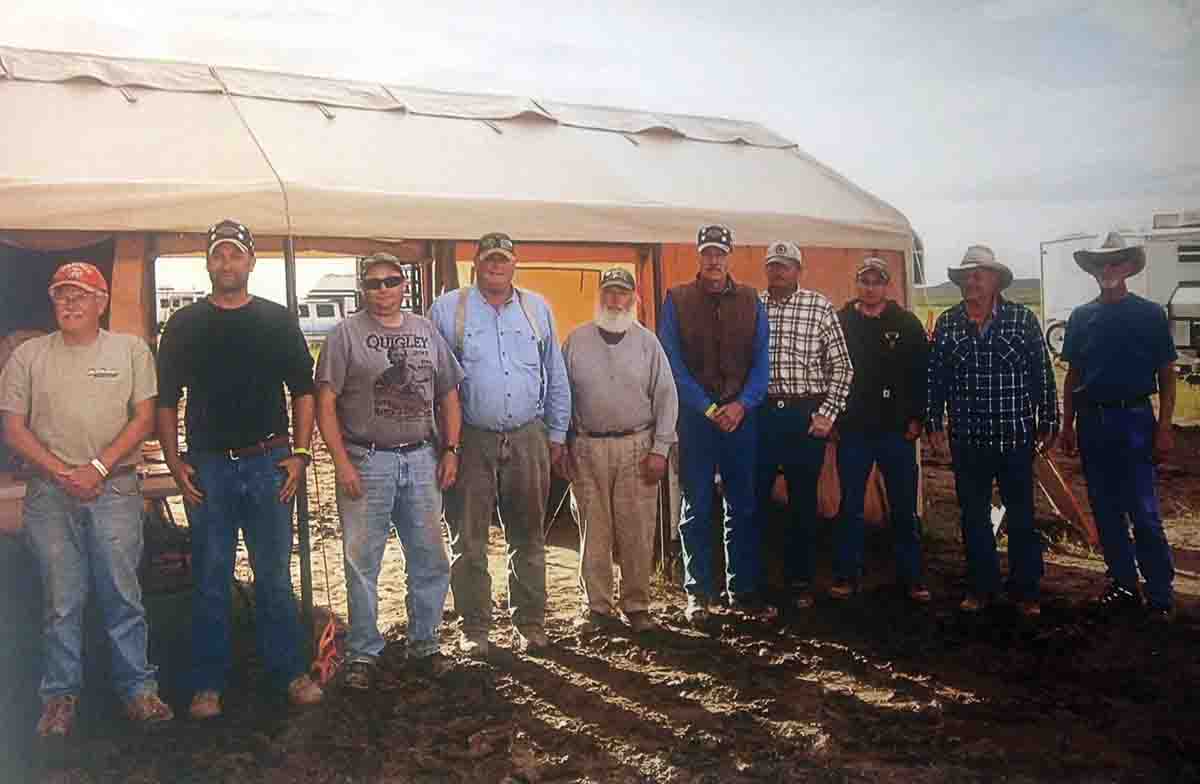
Also, I would like to acknowledge the information and photos passed along to me to by this year’s Quigley Match Director, Claudia Kajin, and her husband, Al Kajin. Their help was greatly appreciated as I prepared this article.
Now, allow me one last personal note: On one of the practice days just prior to this year’s Quigley weekend, my friend Corky Atkinson and I spotted Al Lee at the range. It was Al’s vision that helped initiate the Quigley Match and, as mentioned earlier, it is on his ranch that the match itself is held. While we talked with him, I couldn’t help but appreciate what a profound and positive influence he has had upon those of us who truly enjoy this wonderful competition, and how he has caused so many of us to come to realize the accuracy and power of the grand old long-range black powder cartridge rifles of the late 1800s. Thanks for that gift, Al.
.jpg)


